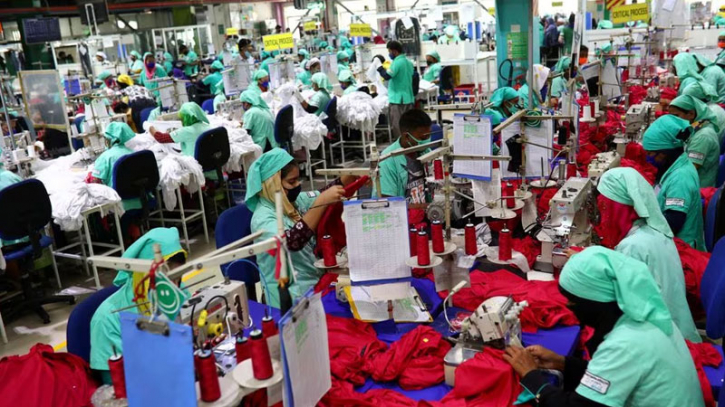Bangladesh's garment exports to face rocky recovery in 2024

Garment exports from Bangladesh may witness moderate growth of between 7%-10% next year after struggling to perform strongly in the outgoing year due to a global economic slowdown.
In January-November of the outgoing year, garment shipments from the country grew 4.35% year-on-year to $42.83 billion, which is an unusually low rate.
Bangladesh's garment sector has been maintaining 10% growth over the last decade, barring the Covid-19 period, and the sector has become a nearly $50 billion export market, accounting for nearly 8% of the $700 billion global market.
However, with historic inflation in major markets such as European countries and the US, garment shipments from Bangladesh experienced a lull in 2023.
Still, local exporters are expecting moderate growth in 2024 as the Unitred States, Bangladesh's single largest export destination, has already paused its high interest rate in the last quarter.
Furthermore, it is expected that the Federal Reserve will reduce the interest rate in the next quarter, which will drive up consumer spending on luxury items like high-end garment items.
Moreover, old inventories in stores of American and European clothing retailers and brands have waned due to sales during festival seasons such as during Thanksgiving, Black Friday, Cyber Monday, Boxing Day and Christmas.
So, demand for garment items from countries like Bangladesh is expected to grow.
"I will not say the outgoing year was a bad one if I compare with other countries and account for the tight global economic situation," said Faruque Hassan, president of the Bangladesh Garment Manufacturers and Exporters Association.
In 2022, the global export market for garment items was worth $576 billion, shrinking from more than $700 billion. Hassan said that it was expected that the amount would be even lower at the end of 2023.
Despite that downturn, garment shipments to the European Union (EU) grew by 2.28 percent in January-November of the outgoing year compared to the corresponding period of 2022. However, shipments to the US declined by 9 percent over the same period.
In most cases, China lost its market share and Bangladesh gained despite the overall downturn.
For instance, Bangladesh became the foremost knitwear exporter to the EU, overtaking China in both value and volume.
Bangladesh had earlier topped China in terms of its volume of exports to the EU and is already the number one exporter of diversified denim items to the trading bloc.
However, the outgoing year presented one of the toughest challenges for the garment sector because of labour unrest relating to a wage hike from September to the first week of December.
That came at a time when the sector was already contending with challenges stemming from the severe fallouts of Covid-19 and Russia's invasion of Ukraine in February 2022.
The significant depreciation of the local currency, taka, against the US dollar gave the garment industry a sigh of relief. But that relief did not last for long given the rising cost of production and labour unrest, which contributed to lower production.
Inadequate gas and power supply to the primary textile sector and garment industries was another problem in the outgoing year even though energy prices were hiked by nearly 100 percent in February.
The next year will be significant for business because Bangladesh will have a new government with a new vision and there will be a lot of changes and challenges to overcome globally.
The garment exporters are also expecting some new facilities from the government that will enable them to be more competitive globally.
With heavy investment in green growth as per demand from western consumers, Bangladesh is now the global champion in green garment factories with more than 206 units in the country.
"I believe Bangladesh will export $100 billion worth of garment items by 2030 as we have diversified both garment items like manmade fibre and markets like Asian economic giants India, Japan and South Korea," Hassan told The Daily Star over phone.
He urged for adequate gas and power supply and to ensure ease of doing business by removing cumbersome processes in customs, bonds and ports while also reducing bureaucracy.
.png)




